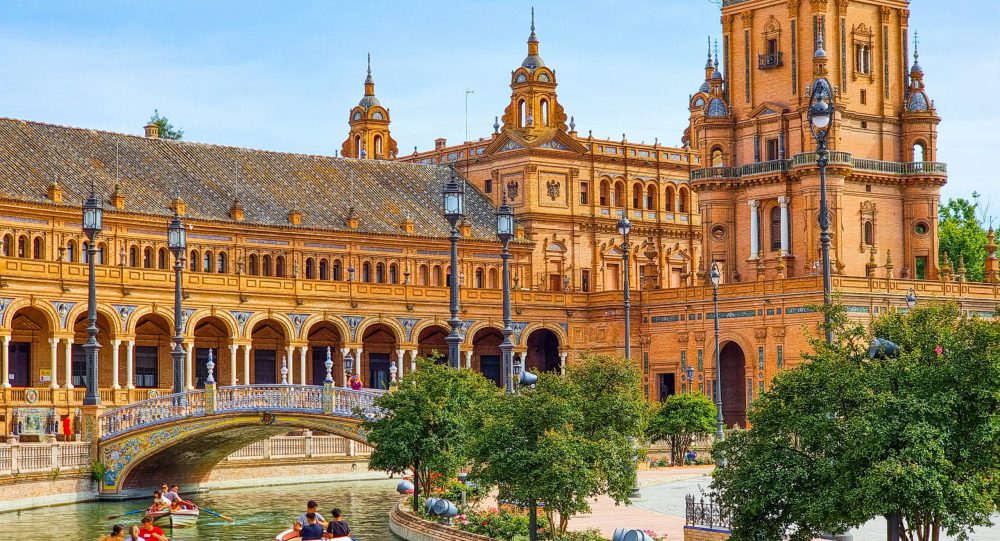On March 6, 2024, the UMass Lowell students visiting Seville, Spain visited Triana, a sector of Seville known for its history in ceramics located on the West side of the Canal De Alfonso XIII. Our first activity of the day brought us to the Mercado de Triana, an indoor shopping plaza located right next to the Plaza del Altozano. Inside in a repurposed fruit shop joined with its neighboring shop was a small theatre where we were set to see the Flamenco act.
The first act began with the dancer on the stage alone wearing a black dress. With no supporting instruments, the only instrumentals was from her castanets and the rhythmic tapping of her shoes.
The next act brought in a male singer, who preformed a duet with her slowly moving about him and the third act brought out a solo guitarist who was very talented. Throughout the show, the dancer went through three different costume changes and throughout the show, she preformed with the guitarist and then both him and the singer. I enjoyed how they brought on each performer one by one since it allowed us to enjoy each one individually before merging all three in the very last act.
The next activity had us at the Flamenco academy down the street. There we got to learn about the history of the dance style from Professor Patricia Lozano. We learned that the origin of Flamenco is a bit foggy, but it came about sometime in the 15th century in Andalusia and its roots can be tied to the migration of the Romani people until the 18th century. They have a predominantly oral culture where stories are passed on verbally, with song and dance taking on a similar treatment. During the lecture, we also learned how to clap along to the different beats in the various style of Flamenco songs, which we would later on do when they had a very talented 17-year-old student dance for us in tandem with two other students, one singing and the other playing guitar. I really enjoyed the performance and was left in awe at how fast the dancer moved and how she seemed to set the pace for everyone else in the performance.
After the activity, we were given some free time until the Semanta Santa tour later on that day. During my time, I shopped around the Triana neighborhood and the ceramic section. While I expected there to be more shops, I ended up stopping at two and ended up buying a garlic plate, oil dispenser, mug, and an egg cup, all made locally in the neighborhood as indicated by the stamp on the bottom of the pieces. Each piece looked to be hand-painted and hand-spun or cast, meaning that molds likely weren’t used in any of the pieces I bought, as they’re used for mass-produced ceramics, so I was pretty happy with my purchases.
Later on in the day, around 7pm, we all met back up at the Plaza del Altozano for our walking tour to see the Semanta Santa preparations. The time had been moved back from 5pm since many of the churches would still be doing mass, but despite this, we ended up waiting around an hour for the first one to end, which was a bit disappointing. But once inside, we got to see the beginning preparations of the floats and what it looked like underneath where people would be carrying it on their backs. The floats boasted a lot of intricate silver posts on them, which supported a canopy that would protect the statues that would be set in the center of the float. Many of these statues have been around for 500 years and would be on display in the church, either behind the center altar or off to the side as they were moved around in preparation of the Santa Semanta festival that would be taking place later on in March. Overall, we toured three churches in total, and afterwards, a small group of us went to see the mall next to the Sevilla tower. Since we ended up getting there only 30 minutes to closing, we were under a bit of a time crunch, but managed to buy a rain coat, which would be useful for the rain we would experience the next day in Cordoba.
Overall, I would have to say that my favorite activity that day was shopping about the neighborhood and experiencing the Flamenco performance. Both allowed me to experience the culture of Seville and Spain’s history in dance.
